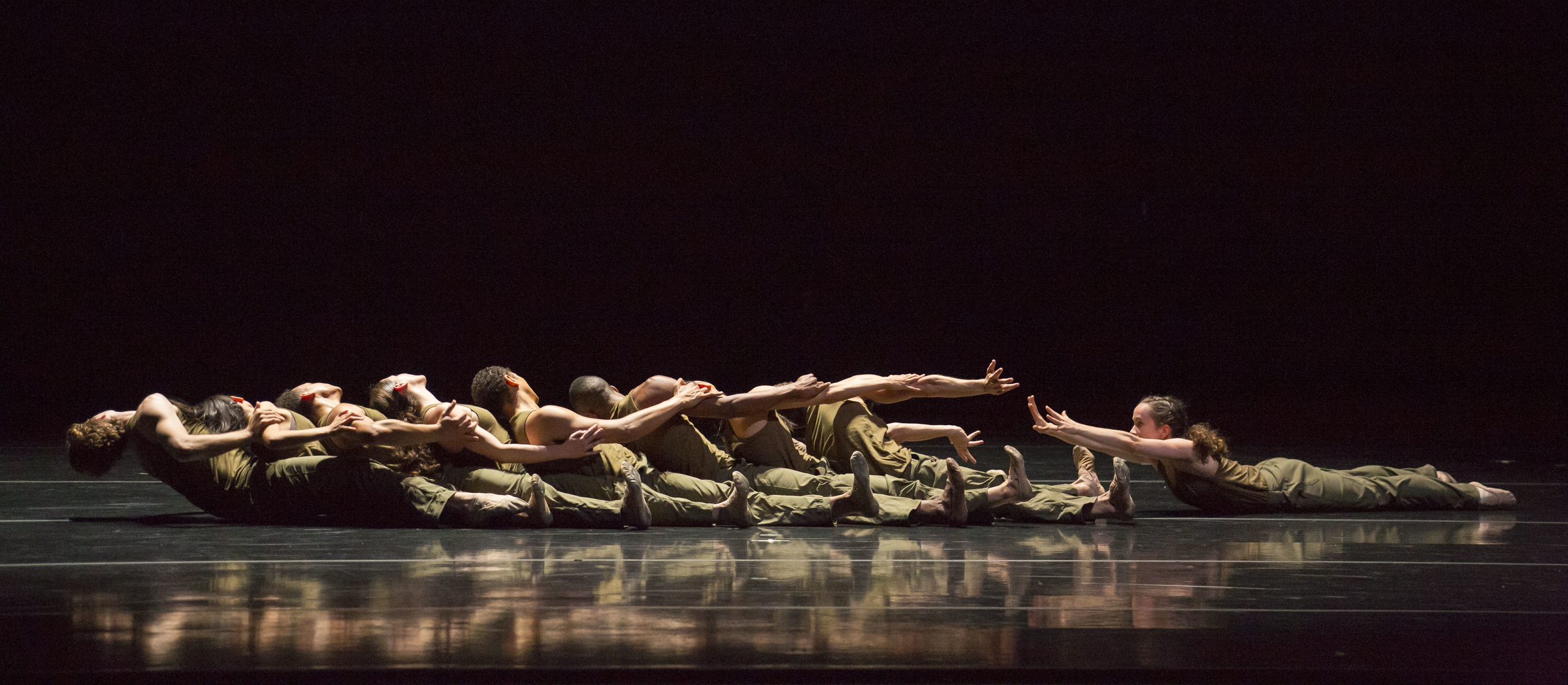Shades of black and white were a recurrent theme on stage for Jessica Lang Dance’s one-night-only program at the Harris Theater last Friday. The audience, however, was all pastels, totally enamored with Jessica Lang during a monumental weekend for Chicago dance that featured a coincidental line-up of influential women choreographers at venues across the city.
Opening with an excerpt from the 2006 work Splendid Isolation II, The Calling features a solo male dancer (Randy Castillo) encased in a massive white circular skirt. Castillo carves the space with deep contractions and swirling arms as the costume reacts to his bidding. The result is a magnificent visual effect not unlike that of Graham’s Lamentation. The Calling, however, seems a less tragically futile manipulation of its fabric prop, perhaps due to its gleaming white color and the freedom of Castillo’s upper body, if for no other reason.
Droplet (2011) continued the black and white theme, with stark white light casting Kana Kimura and Clifton Brown’s shadows onto the cyclorama to accompany projections of a giant, slow motion drop of something (water? ink?) descending from the rafters. Jakub Ciupinski’s original score builds with rising anticipation and the dancing swells as the drop dramatically splashes across the back wall.
The primary reason for Lang’s appearance in Chicago was the anticipated premiere of Tesseracts of Time, created in collaboration with architect Steven Holl and commissioned by the Chicago Architecture Biennial (among a host of others). If one places a cube inside a cube, and then connects the inside corners of the bigger cube to the outside corners of the smaller cube… that’s a tesseract… maybe. Tesseracts exist in a theoretical realm of math that is, perhaps, best represented in artistic mediums. In its four sections, Tesseracts of Time explores the concepts of time and space; in its cheekiest moments, the dancers dance beside video of themselves cast into a geometric jungle. The dramatic ending brings one of the only splashes of color to the evening as sculptures floating above the stage become awash with pinks and blues.

Tesseracts of Time was certainly impressive, but the gem on the program, for me, was Thousand Yard Stare. Presented as a preview, Thousand Yard Stare‘s bare back wall and wings are lit with ominous side light from the mids and shins, casting a gloomy glow across its nine dancers. The score, Beethoven’s String Quartet No. 15, and the dancers pacing to and fro across stage in green khaki costumes hint at a military theme; piles of dancers cradled in each others’ arms reminded me of those tear-jerking scenes in Glory or Band of Brothers, with beautiful classical music accompanying the horrific aftermath of battle. Thousand Yard Stare felt most human among an evening of otherwise highly conceptual works.

It might be worth saying at this point that it is nearly impossible for me to write objectively about Jessica Lang. Lang came to Chicago about 15 years ago for a four month residency at Barat College, where I was a bumbling sophomore dance major. I was on the verge of quitting (for the 8th time), and she was one of those teachers one never forgets; Jessica popped our small, north suburban dance bubble and filled me with an immensely inspirational optimism. Ask me who my main influences are, and she’s near the top of the list.
Jessica Lang’s hand isn’t forced. She treats dance with the care it deserves, without being dainty. Where other choreographers give viewers something akin to all-you-can-eat buffet, Lang’s work is like a stylish appetizer at a fine dining restaurant – you know, the kind of restaurant that gives you two incredibly rare scallops for like $85. She leaves her viewers with a pearl – a beautiful taste in the mouth. You want more, but she won’t give it, and that’s, in part, what makes it so good. In a seemingly simple, relatively short evening, there was so much to see and absorb. Here’s hoping that it’s not another 15 years before glimpsing her again.
